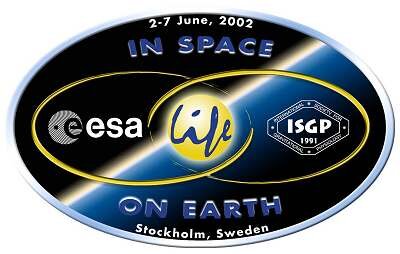Gravity Matters
ESA PR 39-2002. The ESA-sponsored Life Sciences Symposium, which opens on 2 June at the Karolinska Institute in Stockholm, Sweden, will present the benefits of ongoing space research to Earth-bound medical researchers. The Symposium is a triennial event and this is to be devoted to the results of ESA's Microgravity Applications Programme.
The symposium is aptly subtitled Life in Space for Life on Earth: it will provide an opportunity for physicians and physiological scientists around the world to share in the work done aboard the International Space Station and its predecessors.
Experiments - and long-term human experience - in the unique, weightless environment of an orbiting space station can provide surprising insights into the nature of muscular and skeletal development, and may well reveal new ways to treat and cure some very earthly ills. In weightlessness, the human body undergoes some quite startling adapations very quickly. These alterations, which include muscle tissue changes and bone loss, make the ISS a very special laboratory in which to investigate the fundamental mechanisms of human growth and decay right down to the cellular level.

The ways in which astronauts adapt to microgravity might seem a specialised area of space science. In fact, the microgravity environment offers new insights into human physiology, with very real applications here on Earth. Take osteoporosis, for example. A bone-wasting ailment that afflicts many millions of elderly women in particular, its mechanisms can be examined at an accelerated rate in the healthy bodies of weightless astronauts. And the physiological changes brought about by the absence of gravity give useful clues to more mundane - but more widespread - problems, such as lower back pain.
The Symposium will bring together researchers from all over the world, from such countries as Australia and Brazil. Among the leading participants will be five astronauts - two Europeans, Claudie Haigneré and Ulf Merbold, two Americans and a Russian - recounting their own experiences of medium- and long-term spaceflight. Topics under discussion will range from the space-oriented - how future astronauts will be protected from the long-term consequences of microgravity - to the fundamental: how genes and gravity combine to shape our bodies.
Journalists wishing to attend the symposium should contact Michel van Baal, ESA/ESTEC Corporate Communication office, Tel:+31.71.565.3006, e-mail: Michel.van.Baal@esa.int
The proceedings will be accessible on the internet. Journalists wishing to attend the virtual symposium should contact Rebecca Forth to obtain instructions and a login and password, e-mail : Rebecca.Forth@esa.int.
For more information, please contact :
Michel van Baal
ESA/ESTEC Corporate Communication Office
Tel: +31.71.565.3006
Fax: +31.71.565.5728




